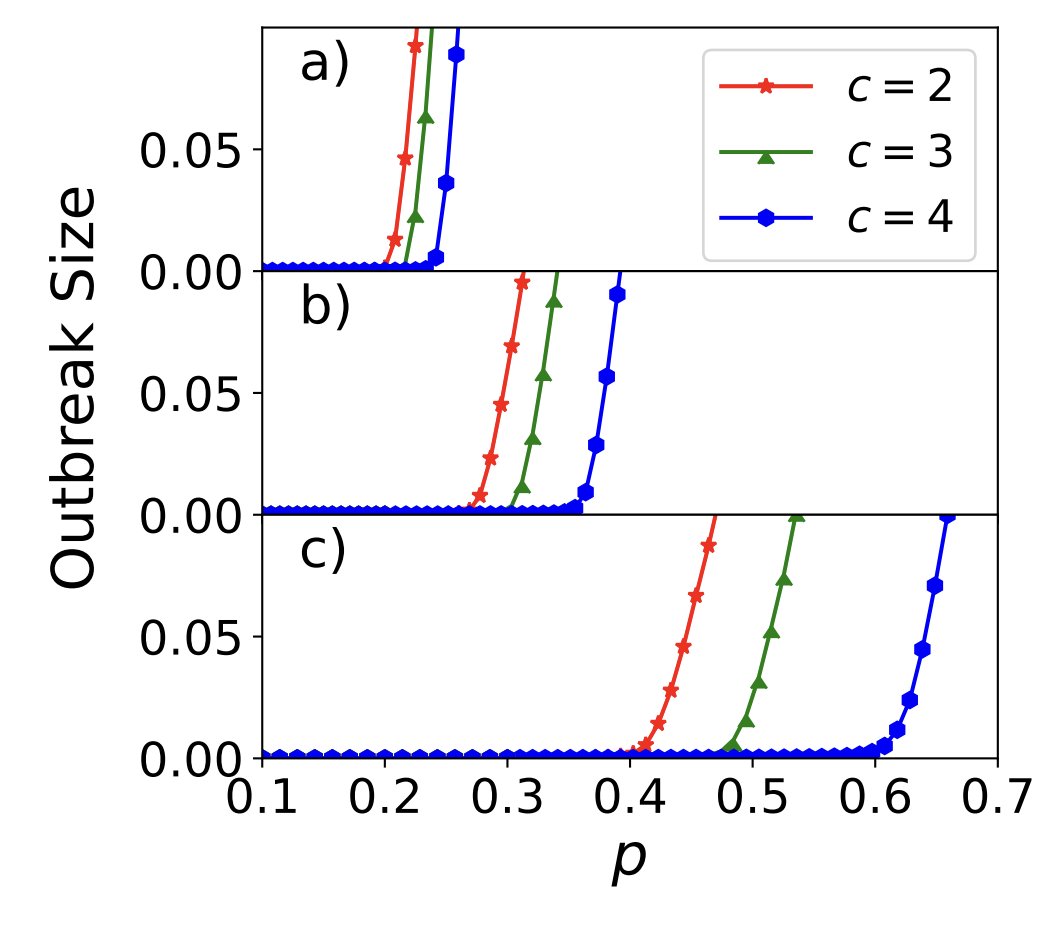#Contact_tracing can be a practical and effective way of containing disease spread. But did you know it's even more effective when social groups are involved?
Check out our* new paper:
arxiv.org/abs/2304.10405
* @leahakeating @gleesonj @DavidJPOS @bolozna
1/6
Check out our* new paper:
arxiv.org/abs/2304.10405
* @leahakeating @gleesonj @DavidJPOS @bolozna
1/6
Contact tracing not only cuts direct infection paths but can also prevent indirect spreading routes in groups. We illustrate how it can be more efficient than what would be predicted by models that assume a fully mixed population or a locally tree-like network structure.
2/6
2/6

Our results show that the outbreak size shrinks as clique size, c, grows, and this is amplified by higher contact tracing success probability α, despite fixed transmission probability p.
#epidemiology #networks #Covid
3/6
#epidemiology #networks #Covid
3/6

The larger the clique size, the less effort we need to quarantine people. CT reduces the effective #reproduction_number Re by increasing α. See how Re changes for nets with different clique sizes when transmission probabilities are (a) p = 1.0, (b) 0.75, and (c) 0.5.
4/6
4/6

Check out this phase diagram demonstrating how increasing clique size can boost the effectiveness of contact tracing and raise the epidemic threshold. Deviating from tree-like networks (red curve) leads to even higher thresholds.
#COVID19 #Epidemics #ContactTracing
5/6
#COVID19 #Epidemics #ContactTracing
5/6

We show how these can be understood by approximating the combination of #disease_spreading and contact tracing with a #complex_contagion process where every failed infection attempt will lead to a lower infection probability in the next attempts.
arxiv.org/abs/2304.10405
6/6.
arxiv.org/abs/2304.10405
6/6.
@threadreaderapp unroll
• • •
Missing some Tweet in this thread? You can try to
force a refresh
 Read on Twitter
Read on Twitter



